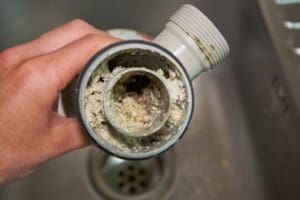Our Definitive Handbook to Resolving Low Water Pressure in Your Home
Our Definitive Handbook to Resolving Low Water Pressure in Your Home
Blog Article
Are you looking for critical info around 10 Reasons for Low Water Pressure in Your House?

Low tide pressure in your home can be an irritating problem, influencing whatever from showering to cleaning dishes. If you're experiencing weak water circulation, there are numerous feasible reasons and remedies to explore. In this guide, we'll review common factors for low water stress and practical actions to resolve the issue properly.
Introduction to Low Water Pressure
Low water stress happens when the flow of water from your faucets, showers, and various other components is weak than normal. This can make day-to-day tasks much more challenging and less efficient. Comprehending the causes of low tide pressure is critical to finding the right option.
Common Sources Of Low Water Pressure
Pipe Obstructions
In time, pipes can come to be obstructed with mineral deposits, debris, or particles, restricting the flow of water. This is a common concern in older homes with galvanized steel pipes.
Rust
Corrosion within pipes can bring about leakages and reduced water stress. Rust accumulation can tighten water flow, particularly in aging plumbing systems.
Faulty Pressure Regulatory Authorities
Pressure regulators are in charge of preserving regular water stress in your home. If they malfunction, it can lead to low tide stress or irregular flow throughout your home.
Community Supply Of Water Issues
Sometimes, the problem exists outside your home. Metropolitan water supply concerns, such as main line leakages or upkeep work, can briefly lower water pressure in your area.
Just How to Detect Low Water Pressure
Examining Taps and Components
Start by evaluating the water pressure at various taps and fixtures throughout your home. If the concern is separated to details locations, it might indicate localized troubles.
Checking Pipelines
Examine visible pipelines for indicators of leakages, rust, or blockages. Take notice of any uncommon sounds, such as banging or rattling pipelines, which might show concerns within the plumbing system.
Consulting with a Plumber
If you're not able to pinpoint the cause of low water pressure, consider hiring a specialist plumber to conduct a detailed inspection. They can recognize underlying concerns and suggest proper services.
Do It Yourself Solutions to Fix Low Water Stress
Cleaning Up Aerators and Showerheads
Mineral deposits can collect in aerators and showerheads, lowering water flow. Eliminate and cleanse these parts consistently to enhance water stress.
Flushing Water Heater
Sediment accumulation in the hot water heater can restrict flow and lower efficiency. Purging the storage tank periodically aids get rid of sediment and maintain optimum performance.
Examining Stress Regulatory Authority
Make sure that the pressure regulatory authority is operating correctly. Adjusting or changing the regulator can aid bring back correct water stress throughout your home.
Cleaning Clogs in Water Lines
For small obstructions, attempt making use of a plumbing serpent or chemical drain cleaner to clear blockages in pipelines. Be cautious when utilizing chemicals and follow security standards.
When to Call a Professional Plumber
If do it yourself initiatives stop working to solve the issue or if you suspect significant plumbing problems, it's ideal to look for aid from a certified plumber. They have the experience and devices to address intricate issues securely and successfully.
Safety Nets to Keep Water Stress
Normal Upkeep
Arrange routine upkeep for your plumbing system to prevent problems such as rust, leakages, and clogs. Attending to small problems early can aid prevent more significant fixings later on.
Installing a Pressure Booster
Consider mounting a pressure booster pump to enhance water stress in locations with regularly low circulation. This can be especially valuable for multi-story homes or properties with high-demand fixtures.
Monitoring Water Use
Be mindful of water usage routines and prevent overtaxing the plumbing system. Easy changes, such as incredible showers and laundry lots, can help preserve sufficient water pressure.
Final thought
Handling low tide pressure can be discouraging, yet determining the underlying causes and implementing proper remedies can bring back optimal circulation throughout your home. Whether it's cleansing aerators, examining pipelines, or speaking with a plumber, taking proactive actions can make certain a consistent supply of water for your everyday needs.
FOUR WAYS TO FIX LOW WATER PRESSURE NOW
Turning on a shower or faucet only to find the water comes out in a sad, slow drizzle is never a good feeling. How exactly are you supposed to wash a pan or take a quick shower when it takes 10 minutes just to rinse off a little soap? The good news is that when your water pressure is bad, there's always a cause: typically one that can be easily fixed. Here are some of the most common causes of low pressure and what you can do to fix the issue:
DEBRIS AND MINERAL DEPOSIT BUILDUPS
If you notice low water pressure from just one or two of the fixtures in your house, the problem likely has to do with debris buildup. Water is full of minerals and other debris, all of which can accumulate in your pipes and on your fixtures. This can cause a blockage that affects how much water flows through. To fix this, try filling a small plastic bag with white vinegar, and use a rubber band to hang it around your showerhead or faucet. Let the head of the fixture soak for a few hours, and the vinegar should loosen the deposits.
WATER LEAKS
Leaks are another common cause of low water pressure. If water is flowing out of your plumbing through a hole or crack before it can reach your fixture, the pressure coming out of the faucet or showerhead will be lower. A plumbing professional is your best bet for finding and repairing a leak in your water supply pipes.
Leaks are another common cause of low water pressure. If water is flowing out of your plumbing through a hole or crack before it can reach your fixture, the pressure coming out of the faucet or showerhead will be lower. A plumbing professional is your best bet for finding and repairing a leak in your water supply pipes.
FOUR WAYS TO FIX LOW WATER PRESSURE NOW
Turning on a shower or faucet only to find the water comes out in a sad, slow drizzle is never a good feeling. How exactly are you supposed to wash a pan or take a quick shower when it takes 10 minutes just to rinse off a little soap? The good news is that when your water pressure is bad, there's always a cause: typically one that can be easily fixed. Here are some of the most common causes of low pressure and what you can do to fix the issue:
DEBRIS AND MINERAL DEPOSIT BUILDUPS
If you notice low water pressure from just one or two of the fixtures in your house, the problem likely has to do with debris buildup. Water is full of minerals and other debris, all of which can accumulate in your pipes and on your fixtures. This can cause a blockage that affects how much water flows through. To fix this, try filling a small plastic bag with white vinegar, and use a rubber band to hang it around your showerhead or faucet. Let the head of the fixture soak for a few hours, and the vinegar should loosen the deposits.
WATER LEAKS
Leaks are another common cause of low water pressure. If water is flowing out of your plumbing through a hole or crack before it can reach your fixture, the pressure coming out of the faucet or showerhead will be lower. A plumbing professional is your best bet for finding and repairing a leak in your water supply pipes.
Leaks are another common cause of low water pressure. If water is flowing out of your plumbing through a hole or crack before it can reach your fixture, the pressure coming out of the faucet or showerhead will be lower. A plumbing professional is your best bet for finding and repairing a leak in your water supply pipes.
A VALVE ISSUE
If you have low water pressure throughout your home, check your main shut-off valve to make sure it's completely open. You may also want to see if there's a pressure-reducing valve installed. If there is, have a plumber help you adjust the settings to get the pressure you're looking for.
OTHERS USING WATER
Believe it or not, your low water pressure could be caused by your neighbors. If you notice low pressure at certain times of day, it may be because you and the people living next to you have similar schedules - when everyone is showering at the same time, the pressure will be lower in every home. Low pressure throughout the neighborhood may also be caused by an issue with your municipal water supply. If that's the case, call the supplier to see if they're working on the issue.
https://www.rotorooter.com/blog/water-leaking/low-water-pressure-fixes/

I hope you liked our excerpt about 9 Reasons for Low Water Pressure in Your House. Thanks so much for taking the time to read through our short article. Sharing is caring. Who knows, you will be helping someone out. Thanks a bunch for your time. Revisit us soon.
Call Today Report this page